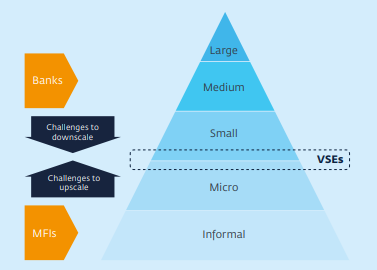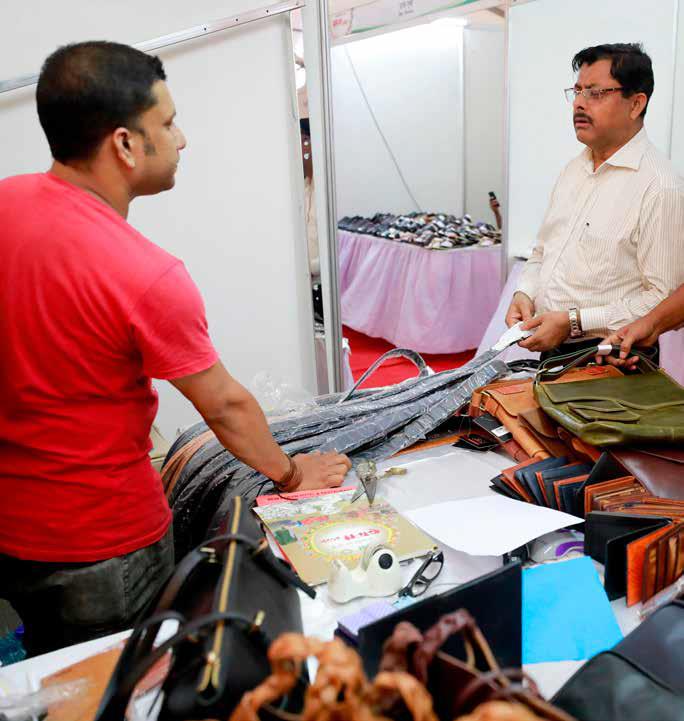Blog
The Role of SMEs in Asia's Economic Growth

In the Asia-Pacific region, SMEs comprise 98% of enterprises and employ 50% of the workforce. In this interview, Professor Asad Ata discusses the barriers to financing SMEs and innovative approaches banks can use to meet their diverse needs.
What role have SMEs specifically played in Asia's economic growth?
Ata: In the Asia-Pacific region SMEs comprise more than 98% of the number of enterprises. These contribute from about 17% to national GDP in the low income countries including India to about 40 to 50% in the higher income countries like Malaysia and Singapore.
We are entering an age of volatility and complexity where SMEs will continue to promote business ownership and entrepreneurial skills. If you look at Asia in general, SMEs have generated the largest number of employment opportunities, second only to agriculture employing more than 50% of the workforce. We may pick any country in the Asia Pacific as an example and we will find that SMEs end up playing an important role in the overall social and economic well-being of their countries.
According to your survey in India and Malaysia, what are the biggest hindrances SMEs face when seeking finance?
Ata: Having said the above I find that the role of SMEs have been severely constrained by their lack of access to finance. It is important to understand that the SMEs’ need for finance exists in different forms as they move from inception to growth and maturity. Unfortunately most SMEs do not make through this happy path.
There is only a limited access to venture and growth capital to the SMEs while lack of collateral limits their capabilities to finance debt. On the structural side cash flow shortages from long payment cycles further exacerbate this problem for SMEs.
If I am to nail down to two factors, I will say - lack of proper training which inhibits SMEs to represent their case while applying for loans and inapt managing of their working capital are two areas where interventions can be made early on to help their case.
In the surveys we conducted, SMEs also report disproportionate barriers in allowing accessing to finance when comparing themselves with larger firms. One of the plausible reasons from the supply side for this discrepancy is the fact that banks perceive the costs and risks of serving SMEs to be much higher than serving larger enterprises.
Given the diverse needs of SMEs, what changes can banks make to better meet their needs?
Ata: Our recent working paper – Financing the SME Value Chains tries to address this question. Existing practices with a fresh outlook can help unlock and reach some of the more inaccessible customer segments and those not perceived as profitable. For example in the rural areas and among cooperative banks we see examples of JLGs or Joint Liability Groups where different businesses come together to borrow from financial institutions and group members borrow individually or collectively by offering mutual guarantees for each other. These customers understand each other better and the functioning of their supply chains, reducing some of the transactional costs traditionally occurred on the side of the banks.
There are other examples where SMEs were able to pay their lenders or suppliers directly from their customers through an intermediary so the loan is serviced as agreed. Banks generally lack this type of expertise and local knowledge. This is where we suggest that banks need to redesign their lending portfolios and services so that they are better able to evaluate and manage the SME’s needs for finance in their local context. Banks should adopt ways to better analyse SME loans and gain a deeper understanding of how these enterprises fund their value chains.
It also needs to be understood that with mass customization and fragmentation of manufacturing to take as an example, creating a viable market for SME financing has become more critical than ever before.
What are the most common sources of alternate finance used by SMEs and what are the pros and cons?
Ata: As I mentioned earlier that when dealing with the SMEs, the formal lending organizations do face challenges such as higher transactions costs, inadequate information about borrowers and weak governance which deter them from developing SME lending portfolios.
When SMEs do not qualify for a loan or credit card, local money lenders tend to be the most sought after alternative for fast cash. Most money lenders being small are more flexible than formal lending organizations. There are fewer bureaucratic layers than a bank, and the loan amounts are not big. They are accessible and understand the local SME business models better. They are also able to keep a tight rein on costs and have developed ways to make sure that funds borrowed are used for profit-making purposes.
We should realize that the SMEs give a higher priority to fast and hassle free loans and thus the subsidies on the interest rates may not be the prime criteria to attract them for a loan application. In addition to money lenders which could be registered on unregistered and besides the banks, SMEs may use many other types of financing options including family and friends, micro finance institutions and owner’s equity. Depending upon the relationship they may be able to avail advance payments from their customers and credit from their suppliers and may even benefit from the use of factoring. Each one of these options comes with its own strength i.e. if used appropriately and weakness if used for the wrong need.
Should banks compete with sources of alternate finance? Why or why not?
Ata: Like all others, banks need to innovate continuously to help SME financing needs. This can benefit in two ways. One – increase the size of the pie eg. through a portfolio of solutions enable greater financial inclusion and two – increase your share of the pie . To this end banks should not only compete but complement these alternate sources of finance when possible.
For example when an SME is unable to make its loan application through a bank there may be steps the SMEs can take with the help of the original (often the larger) bank. Information on the rejected SME loans can be shared by this bank with smaller banks whose risk profile and business model may allow a loan approval. At the same time by having a more inclusive approach of understanding the diverse personal and professional financial needs of their customers, banks can offer a more holistic solution as compared to any single alternate source of finance.


























































